The Ultimate Guide to Cooking Rice the Indian Way
Image Courtesy: Magentic Manifestations
“Rice is a beautiful food. It is beautiful when it grows, precision rows of sparkling green stalks shooting up to reach the hot summer sun. It is beautiful when harvested, autumn gold sheaves piled on diked, patchwork paddies. It is beautiful when, once threshed, it enters granary bins like a (flood) of tiny seed-pearls. It is beautiful when cooked by a practiced hand, pure white and sweetly fragrant.”
Shizuo Tsuji
Table of Contents
I: Rice-My personal story
II: Rice—Why Bother?
III: Rice in India
Chapter 1: Just Rice
Rice Boiled
Curd Rice
Lemon rice
Tamarind rice
Tomato rice
Onion Rice
Jeera Pulao (Cumin Rice)
Saffron pulao (Saffron rice dish)
Chapter 2: Rice Cooked with Lentils
Khichdi (Mixture of Rice, Lentil and Veggies Dish)
Chana Dal Khichdi (Rice dish cooked with split chick pea)
Light Khichdi
Pongal
Bisi Belle Bhath
Chapter 3: Rice Cooked with Veggies
Mattar Pulao (Peas Rice)
Dry Fruits Pulao
Mixed Vegetable Cheese Biryani
Navratna Pulao (Nine Jewels Rice dish)
Stir Fried Rice
Chapter 4: Rice Cooked with Meats
Prawn Stir Fried Rice
Chicken Biryani
Hyderabadi Chicken Biryani
Chicken Kofta (Mince ball) Biryani
Mutton Biryani
Chapter 5: Rice as Snacks and Accompaniments
Chiura or Poha Fry (Savoury Rice Flakes)
Poha (Cooked Rice Flakes)
Idlis (Steamed rice and lentil cakes)
Dosa
Baigun Bhaja (Aubergine fries)
Chapter 6: Rice as Desserts
Chawal Ka Kheer (Rice Pudding)
Natun Gud Ka Kheer (Rice Pudding with Palm Jaggery)
Phirni (Ground Rice Custard)
Sweet Rice With Mango
Sweet Pongal
Sakkarai Pongal (Sweet rice-lentil dessert with milk)
Sweet Poha Kheer (Rice Flakes Pudding)
An Introduction to the Common Indian Spices
A Big Thank You!
Excerpt from Home Style Indian Cooking In A Jiffy
Acknowledgement
Other Books By The Author
Books by the Author in Other Genres
Connect With The Author
About The Author
I: Rice-My personal story
Whenever the word ‘rice’ is mentioned, it invokes all kinds of deep emotions within me.
My mom and dad used to make fun of me when I was a little boy. This is because I needed rice for lunch and dinner and would just not eat anything if it wasn’t served with rice.
You would have guessed by now that I am from a different planet. A planet called ‘India’ which is located in a solar system called ‘Asia’.
When I was 3 years old, my mom and dad took me to another planet known as the United States of America, more specifically to a country inside that planet known as Los Angeles where my uncle lived.
The strangest thing I found about this planet was that there was no rice. My uncle served soups, sausages, pizzas, burgers and spaghetti but no rice!
“Is there no food to eat?” I queried after seeing an apparently “food-laden” table, that left my uncle shell- shocked and my parents not knowing where to look.
“What a Mr. Rice Eater!” I was referred to as by that name.
Today, I am no longer that fussy. I can eat anything for lunch or dinner and am fine with anything and everything. Be it soups, sandwiches, pizzas, pastas or rice! May be I have been corrupted by adulthood, changes in lifestyle, living and studying for four years in a planet called England. However, rice continues to have a special place in my heart.
Rice tastes really well with curries especially with my home made variation of Butter Chicken or British Chicken Tikka Masala. The Indian Basmati rice is my favourite and something I eat at my home by default. But I also love the Thai variety known as ‘Jasmine rice’ which has a very sweet fragrance that tastes absolutely fabulous with the Thai Green or Red or Penang curry.
This is not to say that I don’t like bread. While living in Europe for nearly four years, I had to develop a taste for all kinds of bread. Every bread has its own taste, texture and hardness and I love that. But today I am going to talk about only rice, my home and comfort food.
I find rice very filling that also gives me good sleep. By the way, medical research has established that rice boosts your serotonin levels making you happy and helping you sleep better. So I am not just imagining things my way!
I am also an absolute defender of rice against ‘Western onslaught’ (forgive me for using that term) of claims that rice leads to obesity, or to increased body fat. Mind you I love rice, yet have a flat belly. That is because I regulate my diet and exercise regularly.
In this background, I present to you over the next chapters the nutritional benefits of having rice and the richness of the cultural tradition associated with rice in India. After that you shall be free to savour over thirty really mouth-watering my Home Style rice recipes constituting main dishes, side dishes, snacks and even desserts.
Bon appetit then!
Prasenjeet
II: Rice—Why Bother?
“A diet that consists predominantly of rice leads to the use of opium, just as a diet that consists predominantly of potatoes leads to the use of liquor.”
Friedrich Nietzsche
“Only rice likes to be drowned.”
Charles de Leusse
Doesn’t eating rice make you pot-bellied, like those Chinese “Laughing Buddha” figurines?
Okay. Let’s disregard that as one of the old-wives’ tales.
Because if you look at people who live in villages in any part of Asia: India, China, Thailand, Vietnam, Japan, Cambodia, etc., where rice is the staple food, you will hardly find anyone who is fat or pot-bellied.
But speaking scientifically, isn’t rice so full of useless starch, with less than 1% fat and really negligible amounts of protein?
Ahhhh…..yes.
So who really needs rice?
How about 70% of the world?
Or, almost any part of the world which is wet and humid and NOT colder than 21 degree Celsius (70 degree F)?
Including USA and northern Canada?
Now we are talking.
The medicinal and nutritional properties of rice
Rice is “popular” because it is one of the easiest foods to digest. Being totally gluten free, it is the best food for infants when they have to be weaned. For young adults and old people too, who may have wheat allergies or even celiac disease, eating rice would be what every sensible doctor would prescribe.
For the same reason, rice is great for relieving digestive disorders like diarrhoea, dysentery, colitis and even morning sickness.
In many traditional remedies, rice powder is used as a soothing agent in skin infections or inflammations for diseases ranging from chicken-pox and measles to prickly heat and simple burns.
Rice is high in complex carbohydrates, contains almost no fat, is cholesterol free, and is low in sodium. It is a fair source of protein containing all eight essential amino acids. It is low in the amino acid lysine, which is found in beans and lentils, making the classic combination of rice and beans, popularly known as complementary proteins, a particularly healthy dish.
The soluble fibre in brown rice helps lower the levels of ‘bad’ LDL cholesterol in the blood. The fibre also helps in increasing the digestion time of this carbohydrate, as compared to other processed grains. This means that it has a lower glycaemic index (GI) compared to other grains that helps release sugar into the blood stream in a very slow and controlled manner.
Half a cup of cooked brown rice typically provides 89 calories; 0 grams fat, including saturated fat or trans-fat, 0 milligrams sodium, 45 grams total carbohydrate (15% Daily Value), 0 grams sugar, 3 grams of protein, and some vitamins like B1 or thiamine (0.34 mg), riboflavin (0.05 mg), and niacin (4.7 mg).
A little history would now be in order
Experts are almost unanimous that while rice has grown in India from time immemorial, it was taken to Greece by Alexander the Great around 327 B.C.
Eastwards, it probably travelled with Buddhist monks (and intrepid South Indian traders) to China, Korea, Japan, Thailand, Indonesia and all other countries of South-East Asia, where in any case some other varieties of rice were already growing in the wild.
Arab travellers introduced rice to Egypt, Morocco and Spain. Persian speaking tribes invading India took it to Persia, Turkey and Central Asia. Portugal and Netherlands took rice to their colonies in West Africa. And the Spaniards introduced rice to the Americas through the ’Columbian Exchange’ of natural resources.
Some nuggets about rice production
Believe it or not, but an Australian Government Report claimed that almost 140,000 wild and cultivated rice varieties have been identified so far. As per World Encyclopaedia, farmers even today cultivate 7000 to 8000 varieties of rice.
However, the most popular world cuisines use just three prominent varieties of rice: Indica the long-grained aromatic variety that is grown in India as Basmati rice; Japonica which is the shorter and sticky variety that is popular in Japan for sushi and in Mediterranean countries for dishes such as risotto and paella; and Javanica which is medium grained, falls somewhat in between Indica and Japonica in terms of stickiness, and is popular in South-East Asia and China.
Paddies, which literally mean puddles of water, depict a very interesting agricultural practice. Despite seemingly standing in water, they actually conserve water, as opposed to all other forms of farming that require constant irrigation. When located on hilly slopes, as “terrace farms”, they look so picturesque and picture postcard perfect that they can take literally your breath away.
Image Courtesy: Konstantin Krismer
These plants are so tough that they adapt even to rising flood waters. For example, some varieties in Bangladesh bear their grain above the surface of the water, sometimes to depths of even five meters! A pastor of Nagaland state in India recently received a Guinness World Record certificate for discovering a 2.55 meter (8.5 feet) tall rice plant. The certificate acknowledges that the rice plant, which the pastor found in October 1998 in the state´s Chumukedi area “had 175 stalks and 510 grains in each ear” making it the tallest paddy species found so far in the world.
In 2003, to make sure that the giant rice plant was not a freak of nature, the pastor Melhite sowed the grains taken from the original plant and planted them in his compound. The experiment produced similar results with the new paddy plants measuring 9 feet, having 240 stalks and 460 grains in each ear with each plant yielding 1.18 kg grains average.
Transplanting paddy is a very interesting agricultural practice. One- to six-week-old seedlings are transplanted to basically give them a head start over other competing weeds. Transplanting paddy also lets the farmer adjust the planting calendar to accommodate his labour, water, and other requirements. But still, for most small holdings, cultivating paddy remains a back-breaking work.
In USA too, wealthy rice plantations before the Civil War used to have hundreds of slaves. The 1849 gold rush brought many immigrants to California, including an estimated 40,000 Chinese, whose staple food was rice. Rice production then became a necessity.
But today technology has reduced the inherent drudgery involved in rice cultivation. American mega-farms now use laser technology to level field and to remove broken grains from the milled rice. Fields are seeded by airplanes, and harvested by a single combine operator.
World rice production in 2014-15, according to the USDA, is estimated to exceed 475 million metric tonnes. USA grows almost 7 million tonnes which is surprisingly as much as what Japan grows and slightly more than what Pakistan grows.
U.S. in fact is the world’s 12th largest exporter of rice. Arkansas, northern California and Texas are leading growers. California alone exports some 400,000 tons of rice to all over the world.
And this is when legend has it that rice reached the USA by accident in 1685, when a storm-damaged ship from Madagascar took shelter in Charleston, South Carolina. The captain of the ship gifted a small bag of gold coloured rice to a local farmer.
The rest, as it is said, is History.
The ways rice is now consumed
Rice, of whatever kind, is not just used as a bed for curries or a wrapper for sushi. It is also being cooked with meats in Biryanis, with seafood in Paella, with wine in Risotto, with lentils in Khichdi, and with aromatic spices in Pilaf.
Rice flour is used in making pancakes and all kinds of snacks in India.
Rice now has entered the breakfast space with such ready to eat products as popped and puffed rice, and rice flakes.
Rice is used for such fermented drinks as Chhang without which no festive occasion is considered complete in Ladakh, Tibet, or Bhutan.
Rice straw is used as cattle feed, for thatching roof, and for making hats, mats, ropes, and sound absorbing straw boards.
Rice husk is used for making paper as well as briquettes to be used as fuel source.
Rice bran is used in cattle and poultry feed.
Defatted bran, which is rich in protein, is used in the preparation of biscuits and again as cattle feed.
Refined Rice bran oil is used for cooking. Rice bran wax, a by-product of rice bran oil, is used for making soaps and lubricating material.
Phew! Do we need to say anything more about the myriad ways in which the paddy plant benefits mankind?
III: Rice in India
The love affair that Indians have with rice is legendary. Rice has been a sacred grain, with some of the ancient Indian holy books like the Vedas simply referring to it as annam, meaning food.
Every religious ceremony has to involve rice. Rice is stuck on the red vermillion that is applied to your forehead as akshat, literally meaning something which is indestructible.
Rice is poured into the fire lit during religious ceremonies as havis or offering to gods.
Rice is sprinkled over guests, worshippers and the newlyweds to bless them.
Only rice can form the base (asanam) for placing the sacred pot (kalasham) upon it during religious ceremonies.
In certain parts of India, the bride and bridegroom are made to even stand on a pile of rice during the marriage ceremony. In North India, when a bride enters her husband’s house, she is made to first knock over with her right foot a small metal jar full of rice to signify that with the spilled rice, she is bringing prosperity to the house.
Rice is vital in the ceremony of Annaprashana, a ritualised first feeding, which is conducted in the baby’s sixth or seventh month of life. Mashed boiled rice or a sweet rice pudding called kheer is generally fed to the child accompanied with the chanting of sacred mantras.
When priests or elders bless you, they wish that your life be full of dhan (wealth) and dhanya (rice). Do you notice the similarity between the two words?
The biggest harvest festivals in India are linked to the time when rice is harvested. Bihu in Assam, Pongal in Tamil Nadu, Onam in Kerala and Makar Sakranti in North India—are all festivals where newly harvested rice is offered to the gods amidst lots of dancing and revelry that stretches over 2-3 days. In Pongal, the day’s celebrations include an early morning ceremony of boiling rice with milk and sugar in clay pots, which is allowed to boil over, signifying prosperity.
There are also smaller festivals linked to pre-sowing, sowing, pre-transplanting, transplanting, invoking the rain gods, protecting, and pre-harvesting.
Phew! Looks like the ancient Indians had no other obsession bigger than the quality of the rice growing in their backyards!
Dr Richharia, the well-known rice scientist states that 400,000 varieties of rice existed in India during the Vedic period. He estimates that even today 200,000 varieties of rice exist in India, and has gone on to catalogue 20,000 types of rice in one state (Chattisgarh) alone.
Perennial wild rice still grows in the wetlands of Assam and in the border area with Nepal. Paddy grains found during excavation at Hastinapur (near Delhi) around 1000-750 B.C. are considered to be the oldest sample in the world.
There is hardly any type of soil in which rice cannot be grown including alkaline and acidic soils. Rice crop has also got wide physical adaptability. Therefore, it is grown from below sea-level (Kuttanad area of Kerala) up to an elevation of 2000 metres (6000 feet approximately) in the Himalayan regions of India from Jammu and Kashmir to Arunachal Pradesh.
Rice appears to have travelled to southern India after its domestication in the northern plains. It then spread to all the fertile alluvial plains watered by rivers. Some say that the word rice is derived from the Tamil word arisi.
However, the world recognises India for its North Indian Basmati rice which is an exceptionally aromatic, long-grain, slender, and non-glutinous grain. Translated literally from Hindi, it means “queen of scents.” Scientifically speaking, this aroma is due to the presence of a chemical called 2-acetyl-1-pyrroline, which is found in basmati rice at about 90 parts per billion. That’s about 12 times more than in any other type of rice, giving basmati its unique stature.
When cooked, Basmati rice swells only lengthwise, resulting in long slender grains that are very dry, light and separate. —not sticky. In India there is a saying that grains of rice should be like two brothers, close but not stuck together.
Obviously, that is possible only with Basmati and not with any of the Japonica or Javanica varieties.
Indians cook rice with anything and everything; with lentils, veggies, meat, fish, chicken and seafood. In addition, they have plain or spiced rice as a bed for curries and ground rice for making all kinds of pancakes like appams and dosas. Rice flour is also used for crisping savouries called pakoras. Most temples serve as prasadam (blessings) the Indian rice pudding called kheer or payasam. And then in many Himalayan states, from Ladakh to Sikkim, fermented rice is used for making the potent brew called chhang.
With this short introduction, I present eight plain rice recipes, five recipes for cooking rice with lentils, five each for cooking rice with vegetables and meats, five ways to use rice in snacks and seven as desserts.
There is no Chhang recipe, sadly because that is one dish that is not made in my house!
This is an excerpt from my book ‘The Ultimate Guide to Cooking Rice the Indian Way’ which is available on Amazon at a bargain PRE-ORDER price of US $0.99 (or equivalent) only till 1 February 2015. Prices shall go up to US $6.99 thereafter.
Use Facebook to Comment on this Post
- Posted by
 Prasenjeet
Prasenjeet - Posted in How to cook in a jiffy e-book, Interesting facts
 Jan, 18, 2015
Jan, 18, 2015 No Comments.
No Comments.
Welcome to Cooking in a Jiffy!
If you have been looking for recipes that are truly “Home style”, you have come to just the right place. Read more
Amazon #1 Hot New Releases in Healthy diets
Amazon # 3 Best Seller in Healthy diets
Now Also Available in Portuguese
Categories
- Coolers (3)
- Fish & Fowl (17)
- Health (14)
- How to cook in a jiffy e-book (23)
- Interesting facts (10)
- King's Breakfast (8)
- Our Sweethearts (5)
- Pan Asian (3)
- Rice dishes (6)
- Snacks & Accompaniments (3)
- The Raj effect (3)
- Uncategorized (2)
- Veggie wonders (9)

 Food is never a problem for those who love to cook.
Food is never a problem for those who love to cook.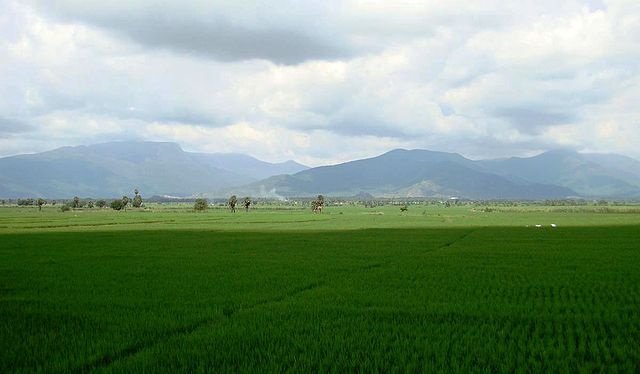
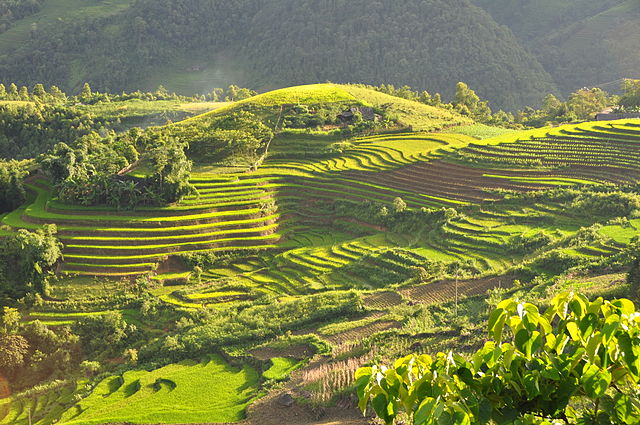








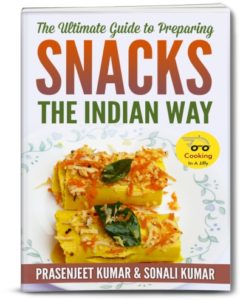
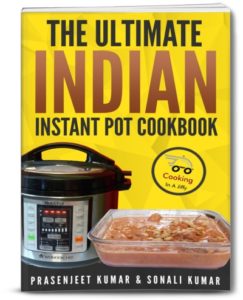
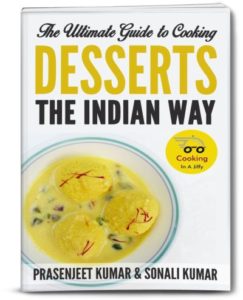
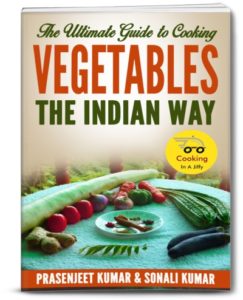
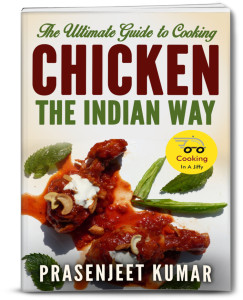
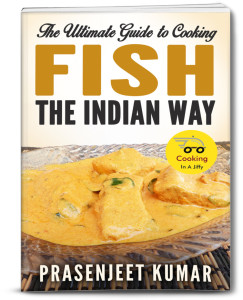
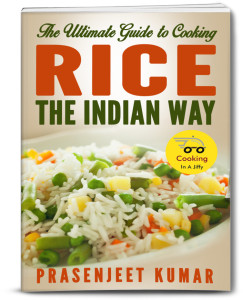
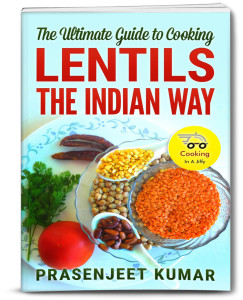
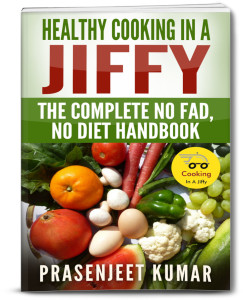
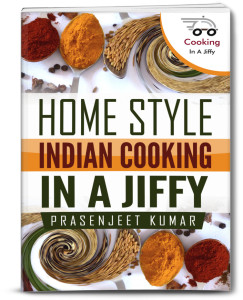
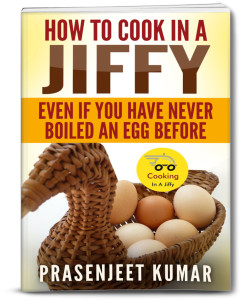

 Join Us On Facebook
Join Us On Facebook Join Us On Twitter
Join Us On Twitter Subscribe to Our Blog
Subscribe to Our Blog